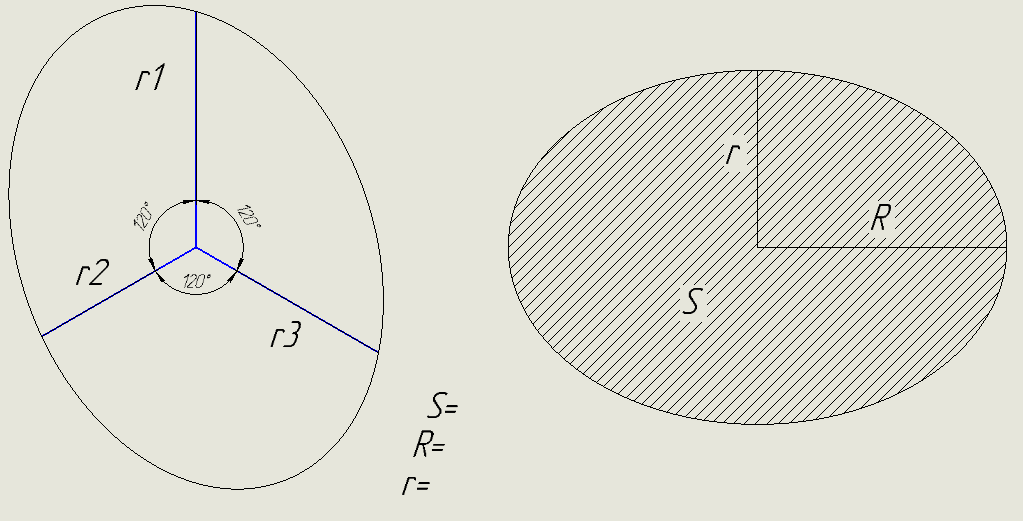Answer the question
In order to leave comments, you need to log in
What does the standard solution of an ellipse look like by center and 3 points?
The bottom line is this:
There is a bar that promises to be of a round section, but in fact the section of this bar is closer to an ellipse, and besides, it also walks along its entire length.
I can take 3 diameter gauges, position them 120 degrees apart from each other (my intuition tells me that this will be enough) and take readings in real time.
With this data, I would like to calculate the area of the ellipse and apply a correction factor. And I would also like to know the maximum diameter / radius of the ellipse in order to warn about the possibility of a bar jam.
Actually a question:
It is necessary to find the area of an ellipse, the minimum and maximum radius.
Knowing r1, r2 and r3 and the angle between them.

Answer the question
In order to leave comments, you need to log in
TLDR:
S = Pi*sqrt(3 / [ (1/L1+1/L2+1/L3)^2-2*(1/L1^2+1/L2^2+1/L3^2) ])x^2/a^2+y^2/b^2 = 1x(t, alpha) = t*cos(alpha)
y(t, alpha) = t*sin(alpha)s = sin(a1), c = cos(a1)1/L1 = c^2/a^2+s^2/b^2cos(120+a1) = cos(120)cos(a1)-sin(120)sin(a1)and sin(120+a1) = cos(120)sin(a1)+sin(120)cos(a1), then you can make 2 more equations:1/L2 = (-1/2*c-sqrt(3)/2*s)^2/a^2+(sqrt(3)/2*c-1/2*s)^2/b^2
L3 = (-1/2*c+sqrt(3)/2*s)^2/a^2+(-sqrt(3)/2*c-1/2*s)^2/b^2s^2+c^2=1, we have 4 equations for 4 unknowns a, b, c, s. 1/a^2+1/b^2 = 2/3*(1/L1+1/L2+1/L3)
1/a^2*b^2 = [ (1/L1+1/L2+1/L3)^2-2*(1/L1^2+1/L2^2+1/L3^2) ]/3S = Pi*ab = Pi*sqrt([ (L1+L2+L3)^2-2*(L1^2+L2^2+L3^2 ]/3)Equation of an ellipse centered at (0,0) - ax^2 + bxy + cy^2 = 1
Plug in known points to get coefficients
Didn't find what you were looking for?
Ask your questionAsk a Question
731 491 924 answers to any question